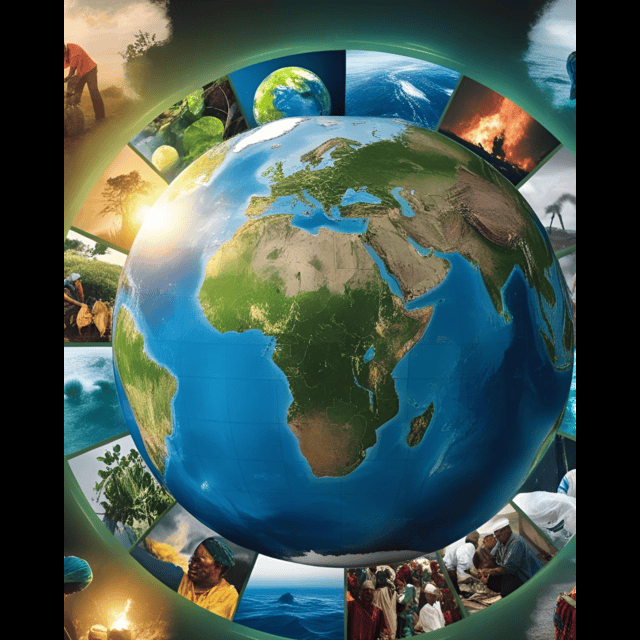How Environmental Issues Shape Foreign Aid Policy in the US

Climate Change as a Foreign Policy Driver
Climate scenarios have come to be recognized in recent years as fundamental considerations in global decision-making particularly in the domains wherein social systems, ecosystems, and livelihoods are most adversely affected. Climate change, severe weather events, rising sea levels, and loss of biodiversity all now enter into the calculations of U.S. financial support, re-shaping foreign aid policy in the US, toward environmental priorities and sustainable development goals.
Those countries that are dearly affected by natural disasters or long-term environmental degradation are now receiving high priority in the aid programs. For example, the Philippines is a country hit almost on a yearly basis with typhoons, floods, and rising sea level, thus putting the US in the position to tailor its foreign assistance more on disaster preparedness, infrastructure resilience, and clean energy transitions.
Environmental Instability and Economic Risk
The link between environmental instability and economic fragility can no longer be ignored at this point in time. Regions facing strong ecological disruptions are often embattled with forced migration due to agricultural collapse and emerging health emergencies. These vulnerabilities towards instability will therefore become focal points in shaping United States foreign aid policy.
For instance, environmental issues in the Philippines have disrupted livelihoods, thus the US invests in sustainable agriculture, climate-resilient housing, and community-based disaster response systems. This view sees foreign aid not only as humanitarian assistance but also as a means toward regional stability and economic security.
US Strategic Interests and Environmental Diplomacy
Although the US foreign aid agenda balances moral and strategic objectives more often than not, environmentalism is increasingly becoming the third axis of political aid. Through assistance to states beleaguered by ecological disasters, the US cements its diplomatic position and garners goodwill from recipient states. Such countries are perhaps more willing to join the US in climate agreements, coordinate militarily, and in some instances, even negotiate trade agreements.
Environmental issues in the Philippines, including coastal erosion and marine pollution, have led to joint programs between the US and local government agencies, advancing both diplomatic interests and the cause of environmental protection. So, the foreign aid policy in the US now reflects a holistic approach, blending climate diplomacy with foreign relations.
Targeted Aid Programs for Climate Resilience
One way the US approaches global climate concerns is through targeted programs establishing skills at the local capacity. In instances like the Philippines, it may entail provision of funding for early warning systems, solar energy grids, or training of environmental scientists. These programs target not only environmental harm but also empowerment for adaptability.
The elevated priority of climate change issues in the Philippines has positioned it as a textbook case of climate-based aid. US agencies such as USAID have markedly invested in biodiversity conservation, coastal resources management, and increasing the resilience of vulnerable populations. Such priorities connect directly back to the evolving priorities in the foreign aid policy in the US.

How Environmental Issues Shape Foreign Aid Policy in the US
Public Perception and Policy Shifts
American public perception is beginning to influence how aid gets distributed. With climate change almost deemed a viable threat, there is increasing social approval for allocating significant amounts from the US Treasury to help countries wrestling with the consequences of climate change. Accordingly, politicians now find it much easier to approve environmental aid programs and investments in green infrastructure abroad.
Increasing concentration on environmental issues in the Philippines has enjoyed bipartisan endorsement, because of the long history of the alliance with the US. This alliance has been reflected in the foreign aid policy in the US, which triggers some environmental funding under the aegis of an even shifting political environment.
Environmental Aid and Global Leadership
Above all, global leadership is an enduring objective. The United States wants to take the lead on climate issues, and foreign aid is one of its strongest instruments for doing so. Through foreign environmental partnerships and funding, the United States spreads its values, displays accountability, and establishes benchmarks for other developed nations.
Addressing environmental issues in the Philippines allows the US government to demonstrate commitment to global sustainability and asserts its leadership in international climate policy. Such environmental action and diplomacy alignment stands as a defining feature of US foreign aid policy evolution.
Environmental issues in the Philippines influence the foreign aid policy in the US by prioritizing climate resilience and fostering partnerships.
How Cultural Diplomacy in Europe Eases Global Tensions in the World
The Impact of Global Arms Trade Map on International Water Security
